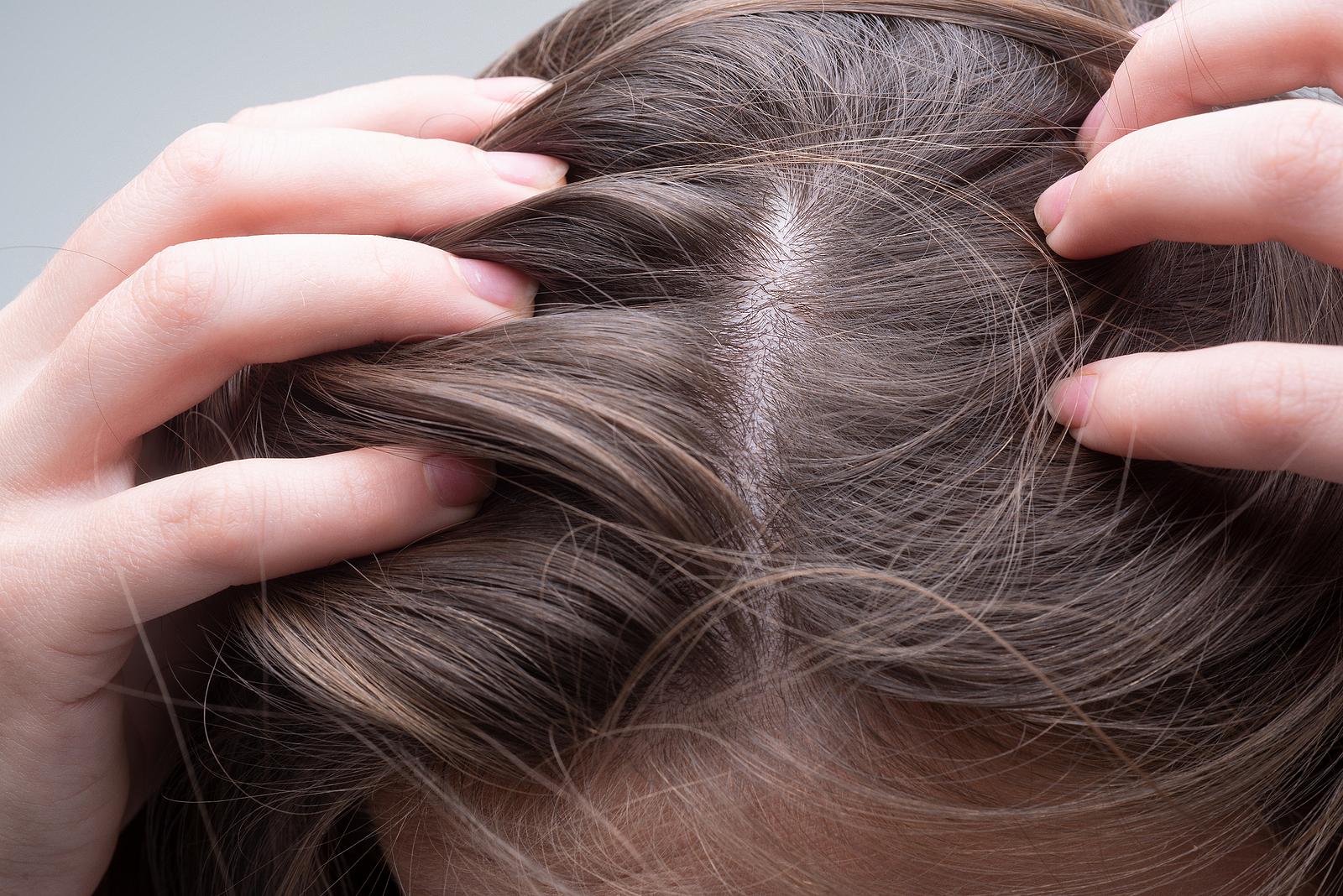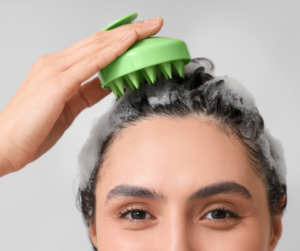Scalp health is a critical part of maintaining strong, healthy hair, but it’s often overlooked. One common issue is scalp build-up, which can hinder hair growth and cause discomfort. This post from Eldorado explores the causes of scalp build-up, how to prevent it, and effective solutions to keep your scalp clean and healthy.
What is Scalp Build-Up?
Scalp build-up occurs when dead skin cells, oil, sweat, product residue, and environmental pollutants accumulate on the scalp. While some level of build-up is normal, excessive accumulation can block hair follicles, irritate the scalp, and lead to issues like dandruff or even hair loss.
Common Causes of Scalp Build-Up
1. Excessive Sebum Production
Sebum, the natural oil produced by the scalp, is essential for keeping your hair hydrated. However, overproduction can lead to greasy build-up, particularly if not washed regularly.
2. Product Overuse
Using heavy styling products like gels, mousses, or sprays can leave residue that’s hard to wash out, contributing to build-up over time.
3. Irregular Washing
Skipping hair-washing days or not properly rinsing shampoo and conditioner can allow dirt, sweat, and products to accumulate.
4. Hard Water
Minerals in hard water, such as calcium and magnesium, can cling to the scalp and hair. This creates a film that’s difficult to remove.
5. Skin Conditions
Conditions like psoriasis, eczema, or seborrheic dermatitis can lead to flaking and excess skin cell build-up.
Signs You Have Scalp Build-Up
Recognizing the signs of scalp build-up early is essential for maintaining a healthy scalp and vibrant hair. While occasional build-up is natural, persistent symptoms can signal a need for better scalp care or professional attention. Here are the most common indicators to look out for:
- Persistent Itchiness or Irritation: A constant urge to scratch your scalp may point to excessive build-up causing inflammation or irritation.
- A Greasy or Waxy Feeling on Your Scalp: Excessive sebum and product residue can leave your scalp feeling slick or sticky.
- Flakes That Resemble Dandruff: Build-up can lead to flaking, often mistaken for dandruff, but typically caused by accumulated dead skin cells and oil.
- An Odor: Trapped bacteria, sweat, or fungi in the build-up can produce an unpleasant odor.
- Hair That Feels Weighed Down or Appears Dull: Excess residue can coat your hair, making it look flat, lifeless, and lacking its natural bounce.
- Difficulty Absorbing Products: When build-up is present, conditioners or treatments may sit on the surface without properly penetrating the scalp or hair strands.
- Increased Hair Shedding or Thinning: Clogged follicles from build-up can interfere with hair growth and lead to excessive shedding.
- Scalp Tenderness or Sensitivity: Build-up can create a barrier that irritates the skin, causing discomfort when touched or brushed.
How to Prevent Scalp Build-Up
1. Wash Your Hair Regularly
Keeping your scalp clean is the first step to preventing build-up. A consistent washing routine tailored to your scalp type is key:
- Oily Scalp: If you have an oily scalp, consider washing your hair every 1–2 days to remove excess sebum and prevent it from accumulating. Over-washing, however, can trigger your scalp to produce even more oil, so find a balance that works for you.
- Dry Scalp: For those with dry or sensitive scalps, washing less frequently—every 3–4 days—might be sufficient to maintain cleanliness without stripping away natural oils.
- Curly or Textured Hair: Individuals with curly or textured hair may find that washing weekly, combined with co-washing (using conditioner instead of shampoo), can help maintain moisture while removing dirt and residue.
- Active Lifestyle: If you sweat a lot due to exercise or live in a humid environment, you may need to wash more frequently to prevent sweat and dirt from contributing to build-up.
To ensure proper cleaning, focus on gently massaging your scalp with your fingertips rather than nails, which can cause irritation. Rinse thoroughly to remove all product.
2. Use the Right Shampoo
Choosing the right shampoo is crucial for addressing and preventing scalp build-up. Different products serve different purposes, so it’s essential to select one based on your scalp’s needs and hair type. Here are some tips and product recommendations:
Types of Shampoos to Consider
- Clarifying Shampoos:
- Use once or twice a month to deeply cleanse your scalp and remove stubborn residue from styling products or hard water. Overuse can dry out your scalp, so use sparingly.
- Recommended Products:
- Neutrogena Anti-Residue Shampoo
- Paul Mitchell Shampoo Two
- Moroccanoil Clarifying Shampoo
- Sulfate-Free Shampoos:
- Ideal for sensitive scalps, these shampoos clean gently without stripping natural oils, helping to maintain scalp balance.
- Recommended Products:
- OGX Hydrating + Tea Tree Mint Shampoo
- SheaMoisture Raw Shea Butter Moisture Retention Shampoo
- Cantu Sulfate-Free Cleansing Cream Shampoo
- Moisturizing Shampoos:
- Great for dry, flaky scalps, these shampoos hydrate while cleansing.
- Recommended Products:
- Briogeo Be Gentle, Be Kind Aloe + Oat Milk Ultra Soothing Shampoo
- Aveeno Scalp Soothing Oat Milk Blend Shampoo
3. Rinse Thoroughly
Always ensure you rinse out all shampoo and conditioner to prevent product residue from sticking to your scalp.
4. Limit Heavy Products
Reduce the use of heavy styling products and switch to lighter, water-based alternatives.
5. Protect Your Hair from Environmental Pollutants
Environmental pollutants can have a significant impact on the health of your scalp and hair. Airborne particles like dust, smoke, and chemicals can settle on your scalp, contributing to build-up and weakening your hair over time. Protecting your hair from these pollutants is essential for maintaining a clean, healthy scalp and vibrant hair.
Effective Solutions for Scalp Build-Up
Exfoliation
Use a scalp scrub or exfoliating treatment to gently remove dead skin cells and product residue. Products with salicylic acid or charcoal can be particularly effective.
Apple Cider Vinegar Rinse
Mix one part apple cider vinegar with two parts water and use it as a rinse after shampooing. It helps to break down build-up and balance your scalp’s pH.
Tea Tree Oil Treatments
Tea tree oil has natural antifungal and antibacterial properties. This makes it effective for soothing irritation and reducing build-up.
Hydration and Diet
Stay hydrated and maintain a balanced diet rich in vitamins and minerals that promote scalp health, such as zinc, biotin, and omega-3 fatty acids.
When to See a Specialist
If you’ve tried various solutions and still experience persistent scalp build-up, itchiness, or hair loss, it may be time to consult a specialist. Dermatologists and hair restoration centers like Eldorado Hair Restoration Center in Maryland can diagnose underlying issues and recommend targeted treatments and solutions.
Contact Eldorado Hair Restoration Center
For advanced hair and scalp care, Eldorado Hair Restoration Center offers a range of services, including custom wigs, hair systems, and transplants. Our experienced team can help you maintain a healthy scalp and achieve the hair you’ve always wanted. Contact us to learn how we can help, or schedule a free hair analysis now.




